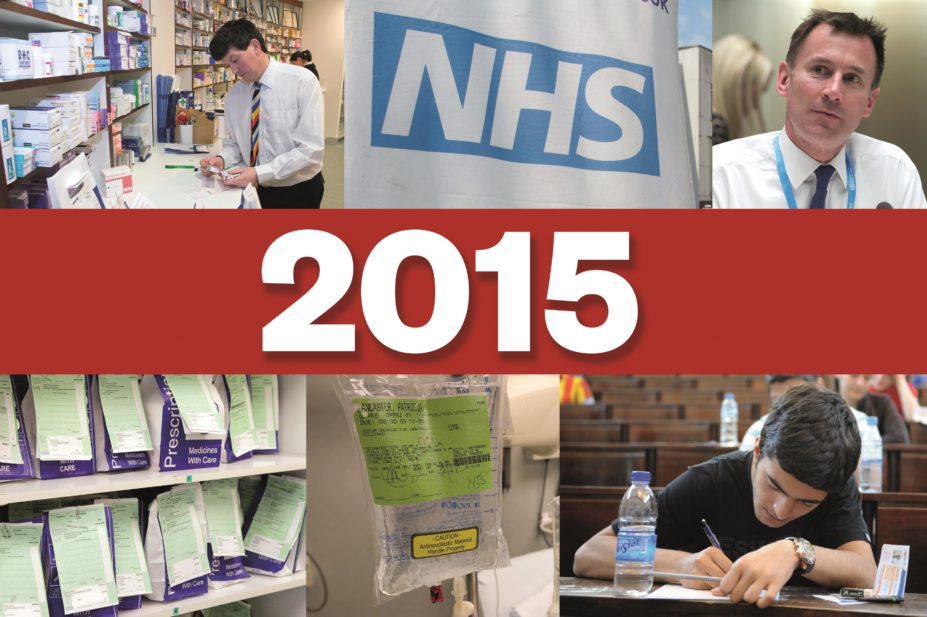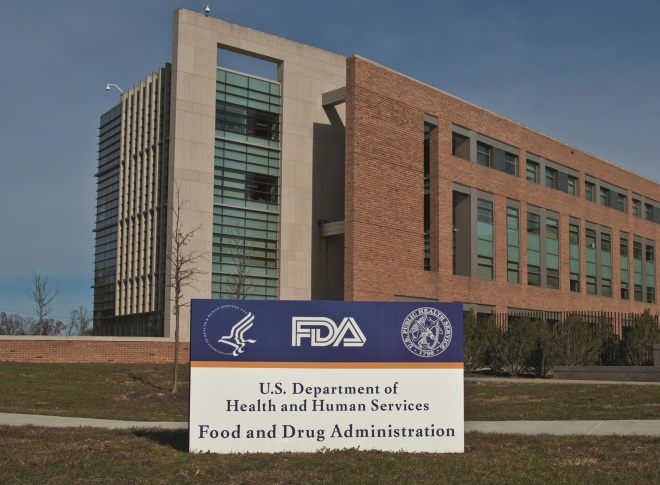
Alamy and Shutterstock.com
Pharmacists may look back on 2015 as a year of transition. From new clinical opportunities to slow progress on reforming pharmacy education, the pharmacy landscape continues to shift amid a backdrop of austere UK public spending and the rising spectre of centralised dispensing in the community. The Pharmaceutical Journal presents ten developments that affected pharmacists in 2015.
New clinical roles
For UK pharmacists wishing to pursue new clinical roles in the community, the outlook is much better compared with 12 months ago.
A scheme to investigate expanded roles in A&E departments and the widespread provision of flu vaccinations on the NHS in community pharmacies have boosted the vision of a stronger clinical focus for pharmacy.
This change was most pronounced in March when the Royal Pharmaceutical Society (RPS) and the Royal College of General Practitioners (RCGP) called for pharmacists to work in GP surgeries to improve pharmaceutical care for their patients.
“When we launched the initiative, there was some kick-back from community pharmacists,” reflects Sandra Gidley, chair of the RPS’s English Pharmacy Board. “Today, there seems to have been a shift in thinking about this, and clearly more community pharmacists are realising that this is an opportunity rather than a threat.”
NHS England has since doubled funding for the project to £31m — “it’s a vote of confidence,” says Gidley — and 403 pharmacists will begin working across 698 practices in spring 2016. The pilot will be crucial in building a case to extend this initiative nationwide, so initial results are eagerly awaited.
Patient data
The implementation of access to the summary care record (SCR) began with a pilot that ran from September 2014 to March 2015 across 140 pharmacies in five areas of England. Gaining access meant pharmacists avoided having to refer patients to another service 92% of the time, with the risk of prescribing errors avoided in nearly one in five cases (18%).
In June, ministers announced the scheme would be rolled out nationally from the autumn, with Day Lewis and pharmacies in Sheffield the first to implement SCR access in November. Pharmacies across England are now signing up and completion is scheduled for 2017.
It came alongside an announcement from health secretary Jeremy Hunt in September that NHS patients in England would be able to access and contribute to their GP records electronically by 2016, extending to all health and care interactions by 2018.
However, NHS England and pharmacy organisations were forced to defend the scheme after a report in the national media suggested patients’ medical data could be used by high street pharmacies for marketing purposes.
The importance of pharmacy’s responsibilities in handling patient data was brought into sharp focus in October, when online pharmacy company Pharmacy2U was fined £130,000 by the Information Commissioners Office for selling details of more than 20,000 of its customers to marketing companies without their knowledge or consent.
Access to innovation
There were developments around access to innovative treatments during 2015. Affordability, in particular, came to the fore.
The UK’s Cancer Drugs Fund (CDF) — for therapies deemed too expensive by appraisal body the National Institute for Health and Care Excellence (NICE) — came under fire. The fund was started in 2010 with a budget of £50m a year as a means of providing desperate patients with access to newly developed therapies. By 2014–2015, the budget rose to £280m, while actual costs spiralled to £416m.
By 12 January, NHS England had withdrawn 16 drugs, covering 25 of the fund’s 84 clinical indications, to save an estimated £80m. A further 17 drugs for 23 indications were withdrawn in September.
The National Audit Office, which scrutinises public spending, recommended an overhaul after its investigation declared the CDF unsustainable on account of huge overspend. A lack of collected clinical data meant the impact on patient outcomes such as survival could not be evaluated according to NICE standards. In November, NHS England conceded a new system was needed and announced a consultation on a ‘new’ CDF as a transitional fund integrated into the NICE appraisal process.
Paul Workman, chief executive of the Institute of Cancer Research in London, said the new fund was “a welcome move towards a more rational and unified system of drug evaluation”.
“The proof of success will be in more, and particularly more innovative, drugs actually reaching patients on the NHS,” he said.
The NHS also increased the budget for expensive but highly effective new hepatitis C treatments, from £40m to £190m in England, following approval of new drugs sofosbuvir and simeprevir by health technology assessors.
NHS England announced it would run a parallel competitive tendering process to bring down costs, which can be around £30,000 for a 12-week course of treatment. In November, NICE also approved Harvoni (ledipasvir-sofosbuvir, Gilead Sciences), Viekirax (ombitasvir–paritaprevir–ritonavir, AbbVie) and Daklinza (daclatasvir, Bristol-Myers Squibb) for people with certain genotypes of hepatitis C: the NHS must fund these treatments by the end of February 2016.

Source: The Hepatitis C Trust
If patient access to new hepatitis C drugs is unduly restricted, legal challenges against the NHS could follow, says Charles Gore, chief executive of the Hepatitis C Trust
“[The NHS] needs to get some handle on the number of people who are going to [need treatment] and budget accordingly,” says Charles Gore, chief executive of the Hepatitis C Trust, “At the same time [it needs to] do its absolute best to force the drug companies to cut their prices.”
If patient access to these drugs is unduly restricted, legal challenges against the NHS could follow, he adds.
Gore is confident that substantial progress can be made towards eliminating the virus from the UK, which might be achieved in ten years if drug prices fall and screening programmes launch. “The long-term savings are enormous because you have zero spend at the point you reach elimination,” he says.
Education and training
Pharmacy education and training is at a crossroads. Scrutiny of the registration assessment intensified as detailed data linking pass rates to individual pharmacy schools were released by the General Pharmaceutical Council (GPhC) for the first time. And pass rate variation between hospital and community trainees fuelled the ongoing debate about the quality of preregistration training.
“The disparity between the pre-registration pass rates between community and hospital has been quite a big issue,” says Stephen Messham, public relations officer at the British Pharmaceutical Students’ Association (BPSA). “But the main concern is that we need to make sure training both at university and preregistration level is [fit for] the clinical needs of the exam and the future of the profession.”
Variability in training quality must be reduced, he says, adding that the BPSA will push for enforceable tutor standards in 2016.
Over the summer, the GPhC asked stakeholders what the initial education and training of “tomorrow’s pharmacy team” should look like. It will use this feedback to review its standards and consult on fresh proposals in 2016, with new standards due in 2017. How this will affect existing pharmacy courses is unclear but the GPhC wants a new focus on teamworking, professionalism and communication skills.
Before this, the new clinically-orientated registration assessment will arrive in June 2016. Messham says the outlook for 2016’s exam is more promising and there are fewer concerns among students because the GPhC has provided a good level of information about the changes.
The BPSA remains concerned about a potential disparity between the numbers of graduates and available preregistration training places, however.
There was little, if any, progress on introducing a national five-year integrated pharmacy degree. Despite talk that the idea is “dead in the water”, Messham says Health Education England, which is leading work on reforming pharmacy education, and Keith Ridge, NHS England’s chief pharmaceutical officer, are committed to an integrated degree. “Hopefully the next year will give us more of a clear idea of what is coming with regards to pharmacy education,” Messham says.
Medicines safety
The cardiovascular risks of painkillers dominated the medicines safety agenda in early 2015. In January, oral diclofenac tablets — used for short-term pain relief — were withdrawn from pharmacy shelves. The UK’s Commission on Human Medicines said a small increased risk of major vascular events, even when diclofenac is taken for a short time or at a lower dose, meant it should no longer be classified as a pharmacy (P) medicine, and must require a prescription.
Further concerns were raised about a link between high-dose ibuprofen and cardiovascular diseases, the effects of NSAIDs on ovulation, and the risks associated with their use among post-myocardial infarction patients receiving antithrombotic therapy.
Cambridge GP Mike Knapton, associate medical director at the British Heart Foundation, says these developments have further clarified the balance of risks and benefits in using NSAIDs. Conversations with patients about taking diclofenac should be based on the Medicines and Healthcare products Regulatory Agency (MHRA) patient leaflet so that advice is “consistent and evidence-based”.
“It would be a discussion about the benefits versus the risks. This tips the balance of that discussion… towards risk, particularly in people who are at high risk of or have pre-existing cardiovascular disease,” he adds.
Ultimately, the “fate” of other non-steroidals as over-the-counter medicines depends on further research, he says. “I’m not in a position yet to say that this appears to be a class effect.”
Drug development
There was a flurry of innovation and drug approvals across several disease areas this year. In heart failure, the new combination drug sacubitril/valsartan (Entresto) was approved by the European Commission (EC) following positive results from the PARADIGM-HF trial.

Source: Wikimedia Commons
The US Food and Drug Administration (FDA) approved flibanserin (Addyi) in August 2015
Two biosimilar monoclonal antibody versions of Janssen Biologics’s anti-inflammatory drug Remicade, containing infliximab, launched after patent protection expired, while the EC approved liraglutide (Saxenda) as a weight-management therapy and idarucizumab (Praxbind), which can neutralise the effect of anticoagulant dabigatran etexilate (Pradaxa). Notably, the US Food and Drug Administration (FDA) approved flibanserin (Addyi) — dubbed ‘female Viagra’ — following campaigning by an industry-sponsored pressure group.
Meanwhile, moves by Pfizer to protect its patent of pregabalin (Lyrica) are set to continue into 2016. In September, the company lost its patent infringement case against generic drug manufacturers Actavis and Mylan over the use of pregabalin, but has been given the go-ahead to appeal the High Court ruling. Pfizer is attempting to protect its second medical use patent for the treatment of neuropathic pain.
Then, in November, subsidiary Warner-Lambert was awarded an interim injunction in the UK preventing manufacturer Sandoz from selling or supplying generic pregabalin for neuropathic pain and LloydsPharmacy from dispensing it.
The Pharmaceutical Services Negotiating Committee (PSNC) says pharmacists should continue to follow NHS England guidance that says they should refer generic prescriptions for neuropathic pain back to prescribers. In the meantime, the PSNC says it will push NHS England and the Department of Health for “clear and unequivocal guidance” if the situation changes.
Regulation and legislation
Reports that pharmacists would be granted a defence against inadvertent dispensing errors were met with relief from across the profession even if, as lawyers pointed out, the “complicated” proposals and other statutory regulations meant the threat of prosecution would not be lifted entirely.
The government is now scrutinising the proposals alongside responses to a consultation held between February and May, and legislation should enter the parliamentary process in 2016. A public consultation on a similar defence for hospital pharmacists should also be out in early 2016, though no timeframe has yet been set.
Legislative changes affecting hospital pharmacists and other settings may well “catch up” with those for community pharmacists by the time they are put before parliament, according to Ash Soni, president of the Royal Pharmaceutical Society and member of the Rebalancing Medicines Legislation and Pharmacy Regulation Programme Board that has advised the government. Soni says he would be “disappointed” if the legislative changes were not introduced in 2016.
He hopes the changes will allow pharmacists to feel more comfortable reporting mistakes. “We’re doing a huge amount of work on supporting pharmacists to report errors, because that’s the [goal].” He says part of the challenge is to make sure reporting is seen as the norm.
“Gathering the information is the first step,” he says. “It’s then being able to collate it and identify the issues which then enable us to provide safer care. That’s the challenge.”
NHS sustainability

Source: RPS
Keith Ridge, NHS England’s chief pharmaceutical officer, announced that contractual funding for community pharmacy in England is set to be cut by £170m in 2016
The sustainability of the NHS continued to dominate health coverage in the UK press in 2015.
In October, an analysis by Monitor, which regulates England’s 151 NHS foundation trusts, found many were missing national waiting time targets, including A&E departments, routine operations and some cancer treatments. This picture only worsened as the year progressed.
By November, NHS trusts in England had declared a deficit of £1.6bn between April and September 2015, with trusts predicting a £2.2bn deficit by the end of the financial year. Monitor and the NHS Trust Development Authority, which regulates 86 NHS trusts, blamed delayed transfers of care for affecting standards in departments such as A&E, while spending on agency staff “is continuing to have an extremely detrimental effect on their financial position”.
Although the chancellor’s spending review in November pledged a £10bn real-terms boost to NHS funding over the next five years, public health was earmarked for annual cuts of 3.9%. Experts predict a potentially damaging effect on pharmacy’s burgeoning role in prevention and health promotion.
The year drew to a close with an announcement from the Department of Health that contractual funding for community pharmacy in England is set to be cut by £170m in 2016.
Medicines information
Beyond developments in pharmacy’s access to patient records, there were also many updates to advice and guidance on medicines in 2015.
Guidelines were published on a range of topics relevant to pharmacy: on antimicrobial stewardship, medicines optimisation, the first national guideline on controlled drugs use and changes to drug driving laws.
In particular, the National Institute for Health and Care Excellence (NICE) set out its first position on hormone replacement therapy (HRT) to treat symptoms of menopause. Following years of concern about the reported increased risk of breast cancer associated with the treatment, NICE said clinicians and patients should nonetheless be more willing to consider HRT after discussing the balance of risks and benefits, and that too many women had “suffered in silence” with symptoms that HRT could treat effectively.
David Richmond, president of the Royal College of Obstetricians and Gynaecologists, described the guideline as a “milestone” for healthcare professionals and women that would “empower” them to make informed treatment decisions. And Heather Currie, chair of the British Menopause Society, agreed the guideline should “clarify uncertainty around both prescribed and non-prescribed treatment options”, following years of confusion.

Source: PharmPress / RPS
Redesigned BNF content will allow publishers to build digital products that give users access to the most up-to-date drug information
Also, in September 2015, a substantially redesigned British National Formulary (BNF) and BNF for Children (BNFC) were launched by the Royal Pharmaceutical Society, which also publishes The Pharmaceutical Journal. Drug information experts welcomed the major changes to structure and appearance, saying the publication is more “intuitive” to use in clinical settings.
The BNF changes herald a shift from print to digital-first delivery of its drug information. Speaking in September 2015, Karen Baxter, director of BNF, said the redesigned content structure allowed publishers to build better digital products, giving users access to the most up-to-date drug information across multiple devices. “Over the past couple of years the demand for digital products has grown enormously and that, aligned with the NHS pursuing a digital agenda, meant that the time was right to take the BNF from its very print-constrained structure into a digital future,” she said.
One to watch in 2016: Centralised dispensing

Source: Department of Health
In October 2015, Alistair Burt, community and social care minister, announced that there would be a consultation on proposed legislative changes to allow all community pharmacies to adopt hub and spoke dispensing
Government proposals to allow greater use of centralised dispensing loom large over 2016. So far a minority pursuit, the ‘hub and spoke’ approach – where a central facility assembles, dispenses and labels medicines and distributes to pharmacies for patients to collect – could grow considerably over the next few years. In October 2015, community and social care minister Alistair Burt lit the touch paper, announcing a consultation on proposed legislative changes to allow all community pharmacies to adopt the system.
The reaction was instant. Most vocal was the strongly critical Pharmaceutical Services Negotiating Committee. Chief executive Sue Sharpe said the assertion from Keith Ridge, NHS England’s chief pharmaceutical officer, that most items could be dispensed this way was “unevidenced”, and questioned whether it would meet patient need and choice. “Is it an attack on the network? Is it an attempt to destabilise the whole of the community pharmacy sector [and] reduce it to a mere distributor?” she asked at the Local Pharmaceutical Committees’ (LPC) annual conference in Birmingham in November. The National Pharmacy Association warned that “special care” must be taken not to undermine the accessibility of community pharmacist expertise in pursuing the model.
A spokesperson for Celesio UK, which owns Lloydspharmacy, says the company sees hub and spoke as an opportunity to “free pharmacists from dispensing” so they can spend more time using their clinical expertise to help patients better manage their health and improve outcomes. The company operates four dispensing hubs — Warrington, Bristol, Glasgow and Redditch — serving hundreds of its Lloydspharmacy stores. These deal with planned activity such as repeat prescriptions, sending medicines back to the pharmacy for collection or delivery. “It is a model which we’ve found to be very beneficial and we will continue to explore opportunities with the concept so more patients can benefit from extra time with pharmacists,” the spokesperson says.
You may also be interested in

UK trust in pharmacists among highest in Europe, survey results shows

Pharmacy staff who have died during COVID-19 pandemic to be remembered during minute’s silence
